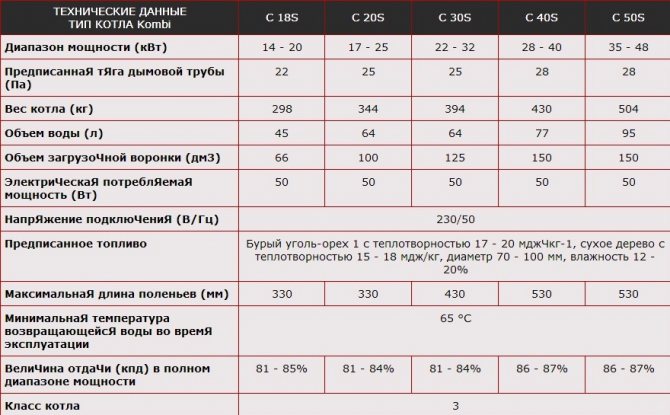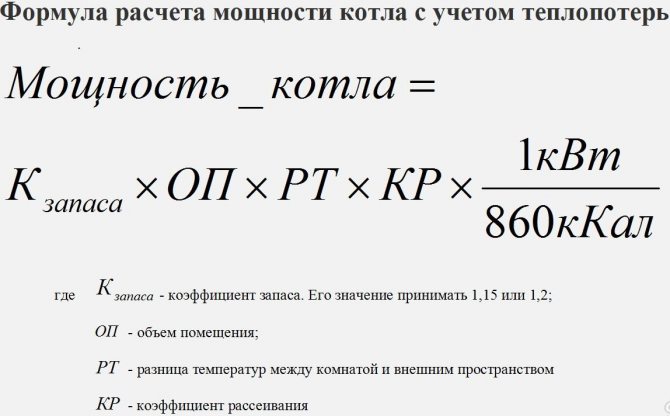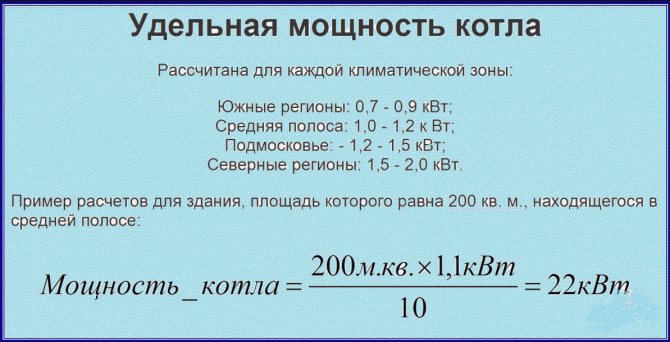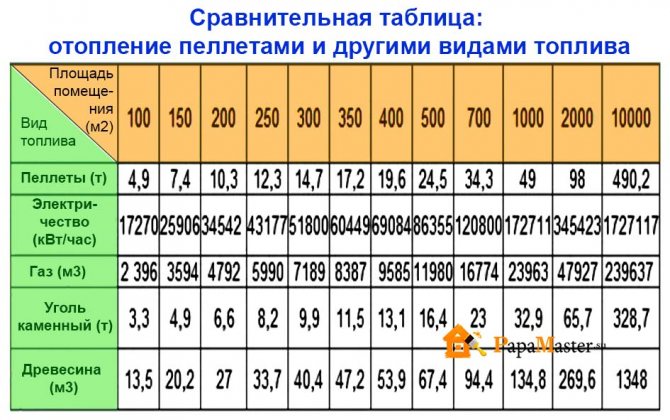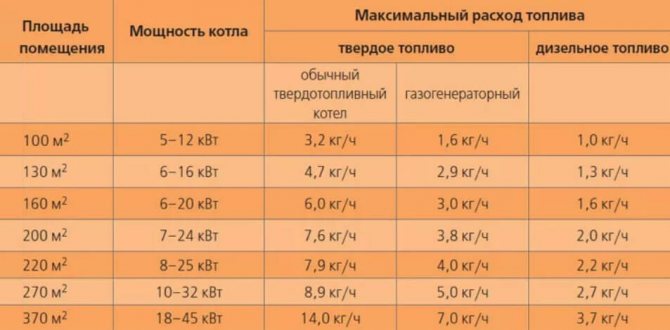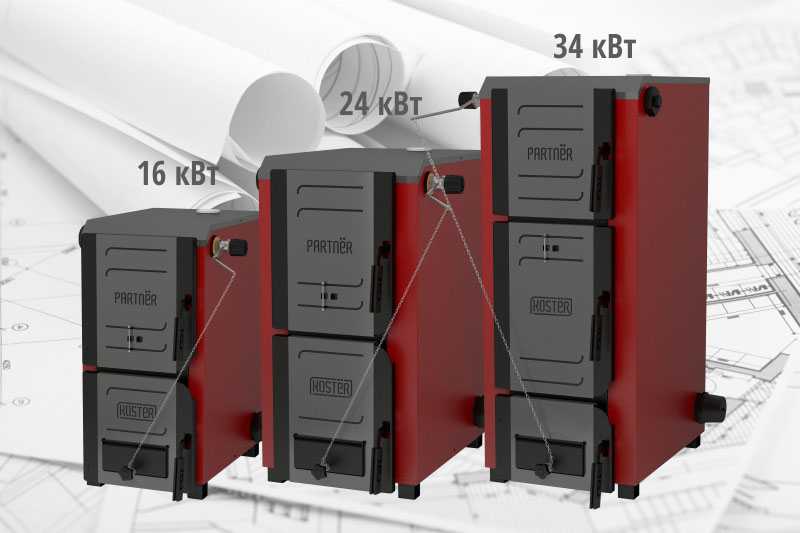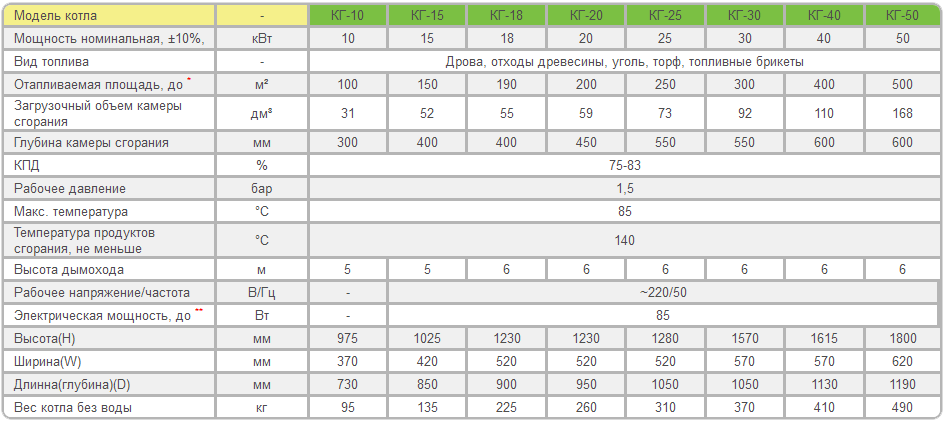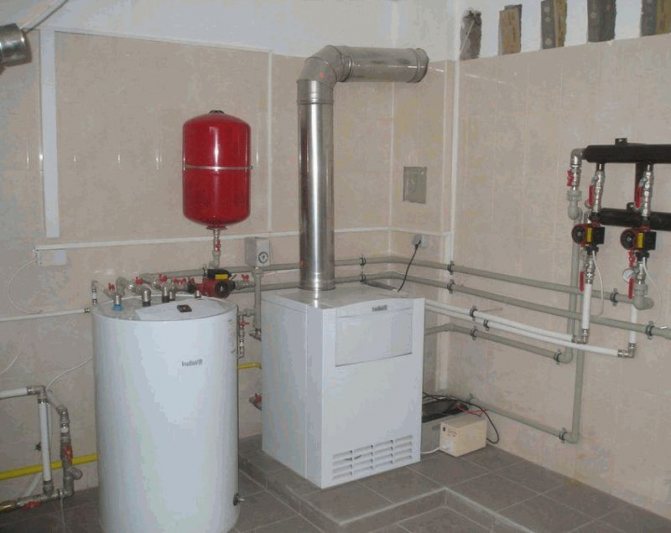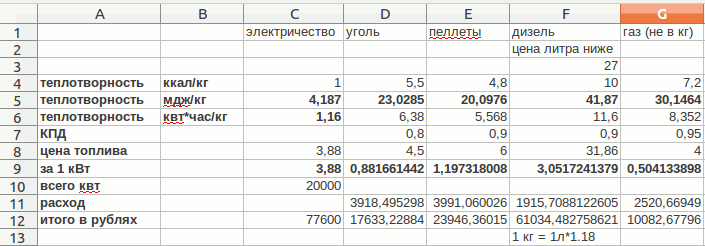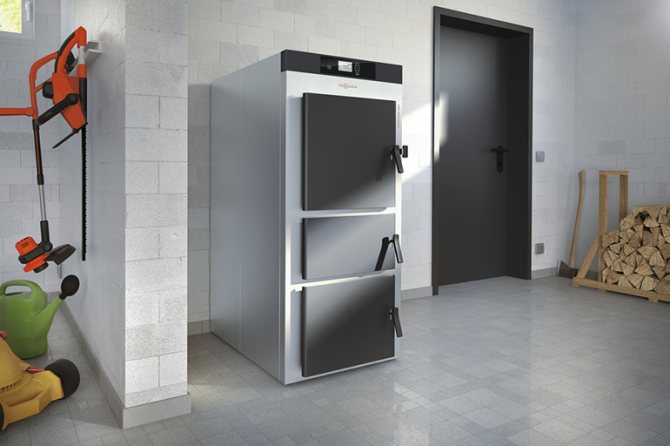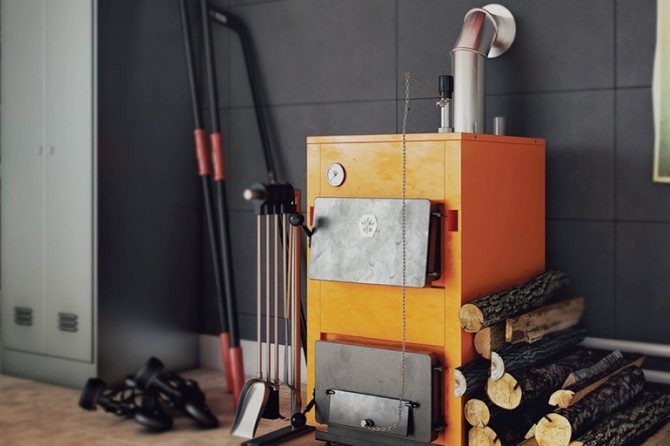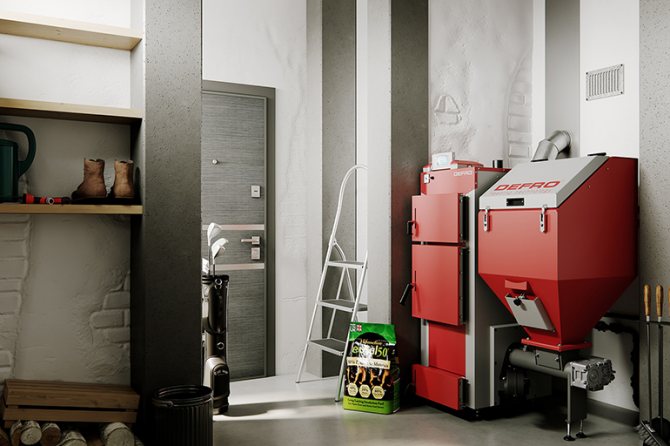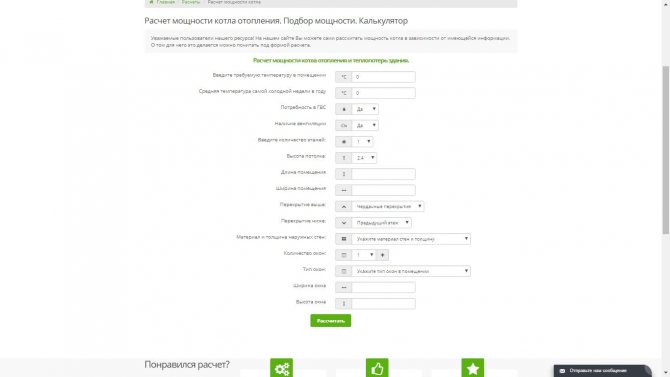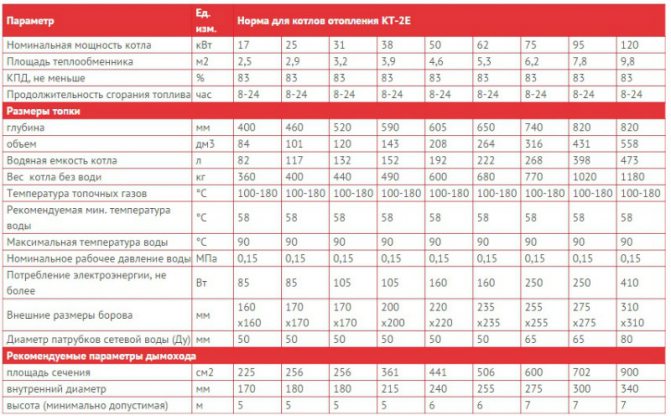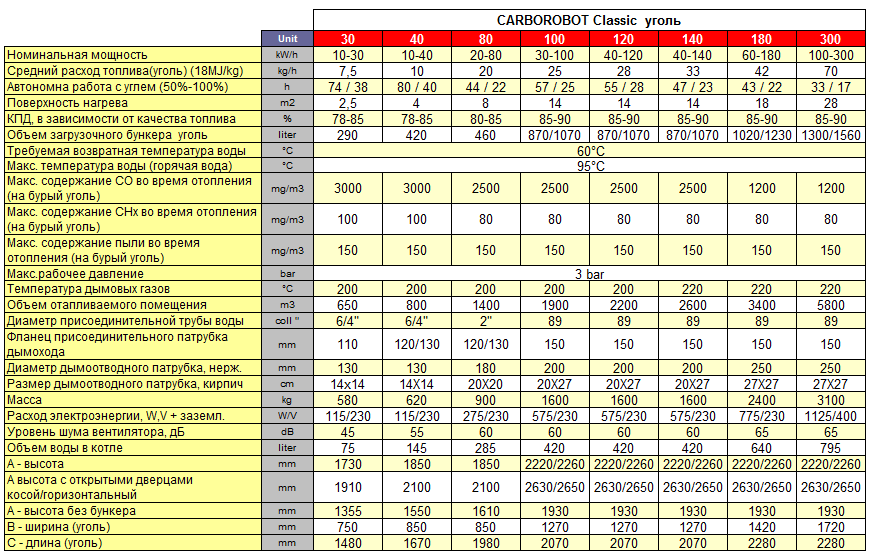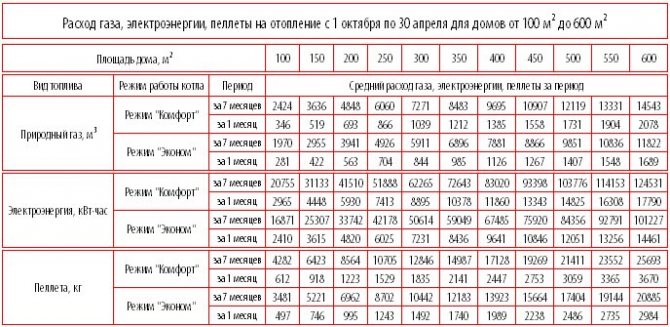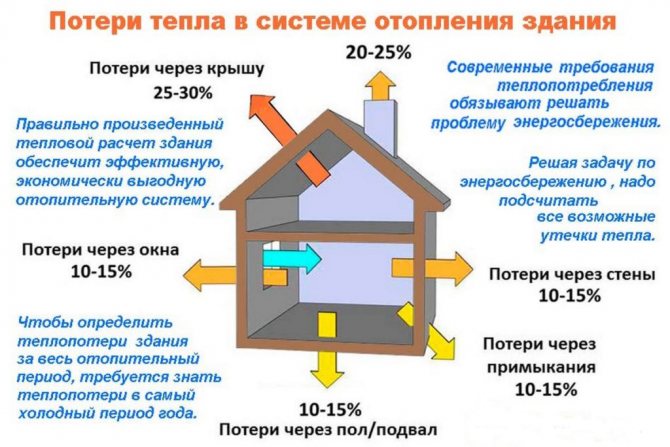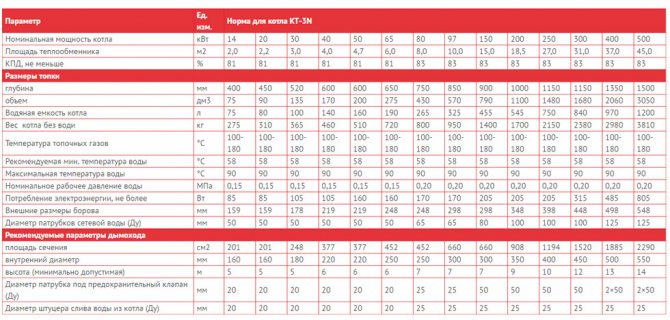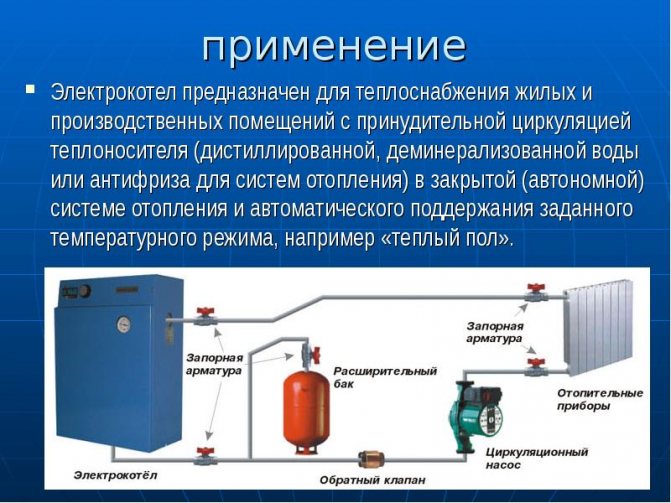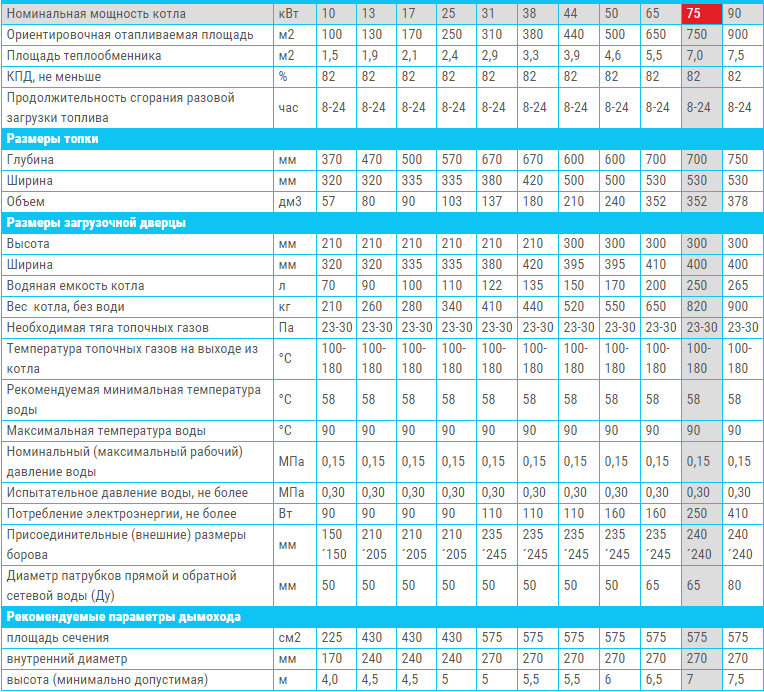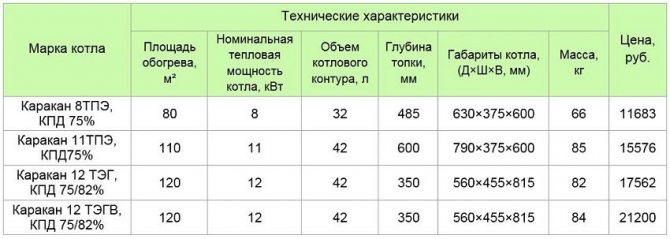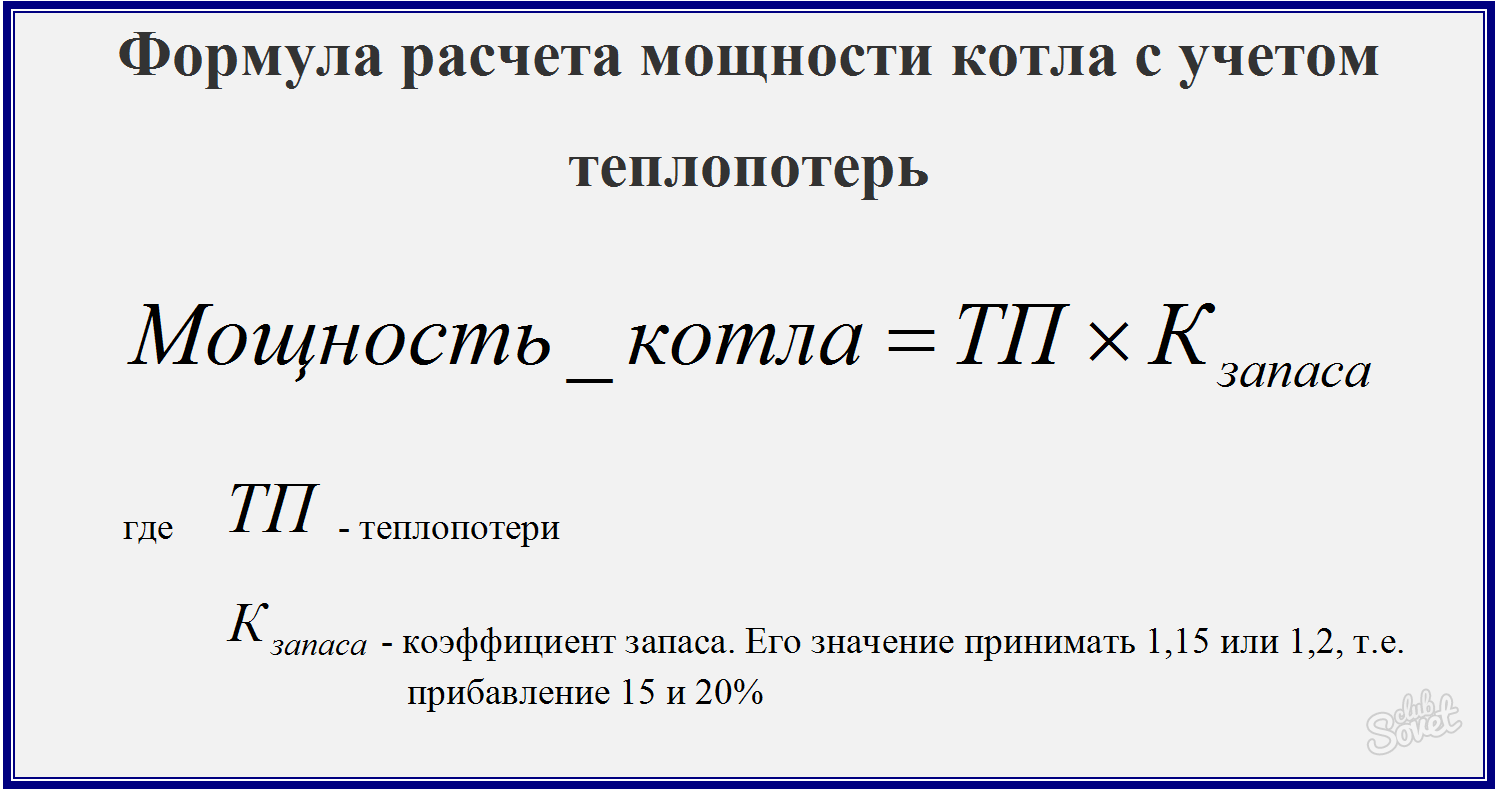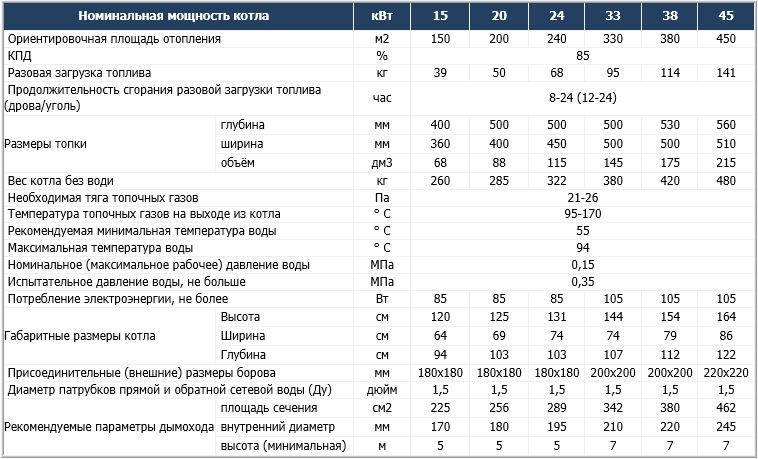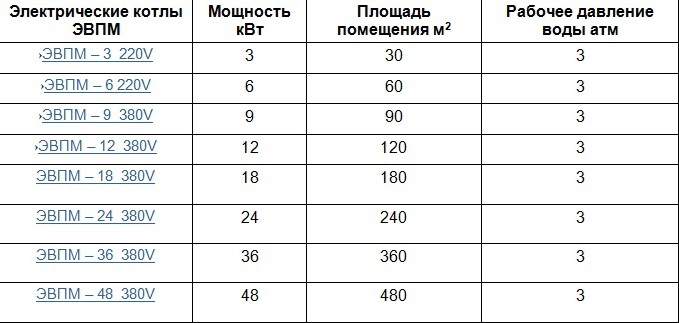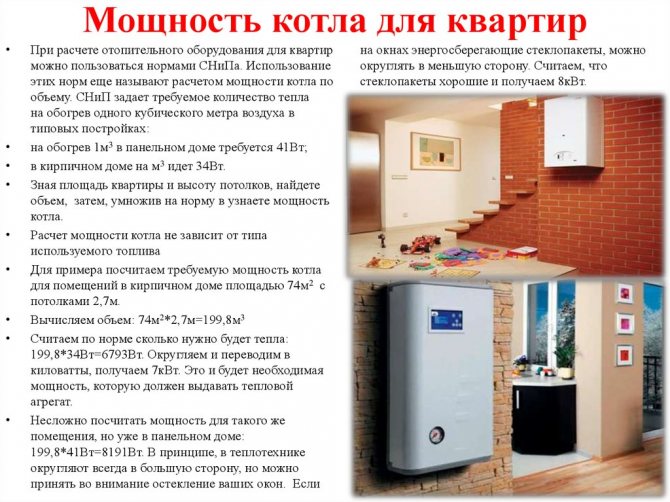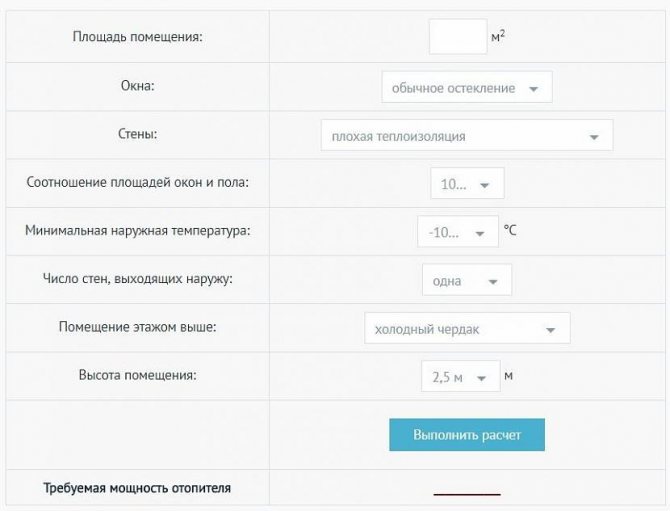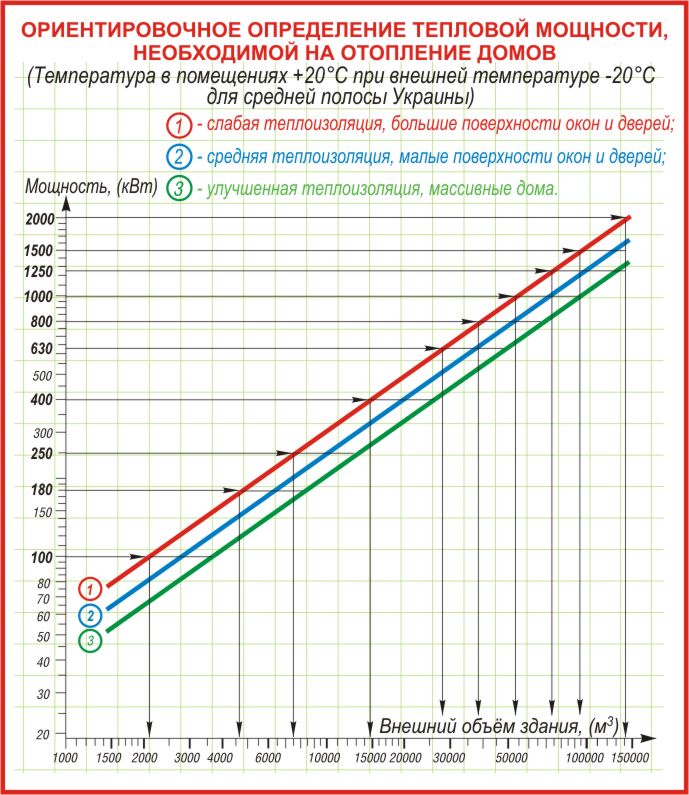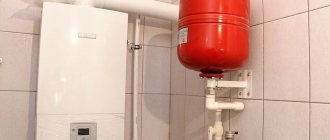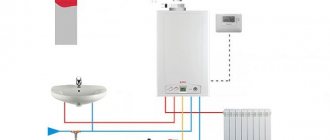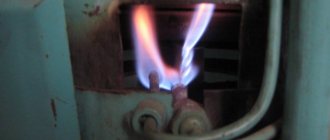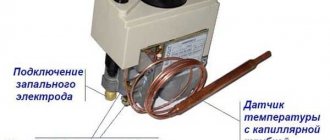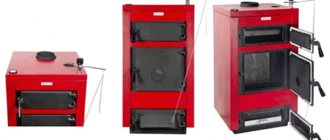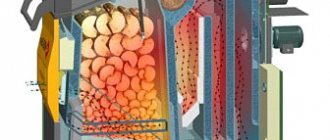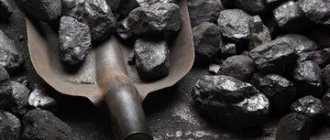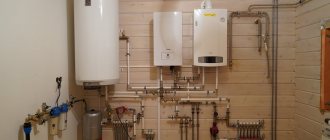In order to choose a solid fuel boiler, you need to pay attention to the power. This parameter shows how much heat a specific device can create when connected to the heating system. It directly depends on this whether it is possible with the help of such equipment to provide the house with heat in the required amount or not.
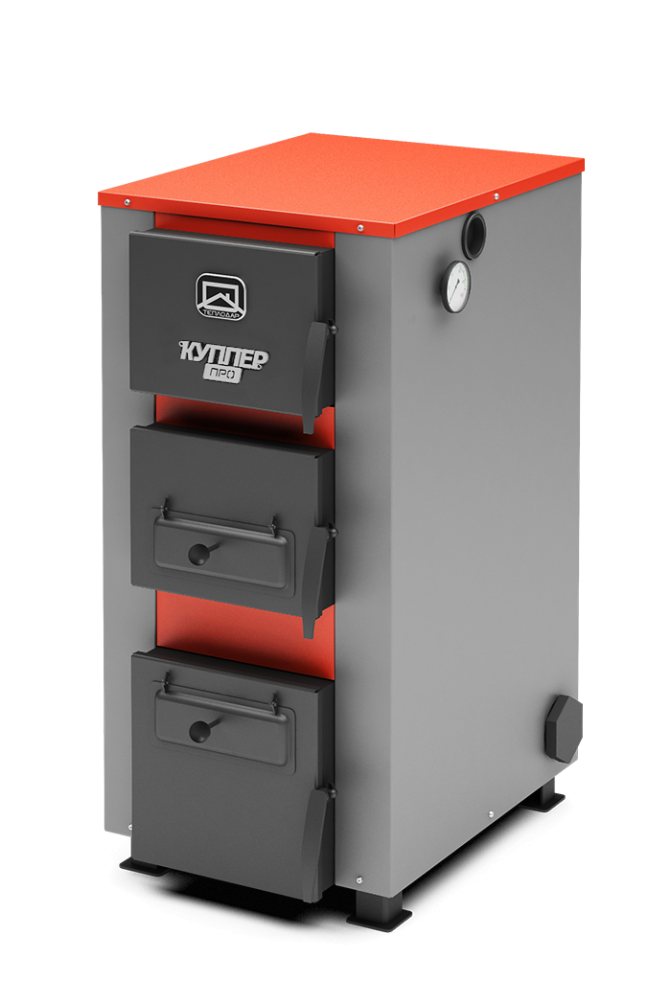
For example, in a room where a pellet boiler with a low power is installed, it will be cool at best. Also, not the best option is to install a boiler with excess capacity, because it will constantly work in an economical mode, and this will significantly reduce the efficiency indicator.
So, in order to calculate the power of the boiler for heating a private house, you need to follow certain rules.
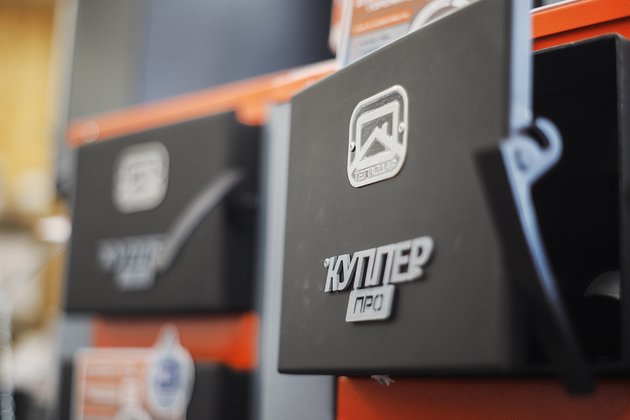

How to calculate the power of a heating boiler, knowing the volume of the heated room?
The heat output of the boiler is determined by the formula:
Q = V × ΔT × K / 850
- Q
- the amount of heat in kW / h - V
- the volume of the heated room in cubic meters - ΔT
- the difference between the temperature outside and inside the house - TO
- coefficient of heat loss - 850
- the number due to which the product of the above three parameters can be converted into kW / h
Indicator TO
can have the following meanings:
- 3-4 - if the structure of the building is simplified and wooden, or if it is made of profiled sheet
- 2-2.9 - the room has little thermal insulation. Such a room has a simple structure, the length of 1 brick is equal to the thickness of the wall, the windows and the roof have a simplified construction.
- 1-1.9 - the building structure is considered standard. These houses have a double brick tab and few simple windows. Roof roof ordinary
- 0.6-0.9 - the building structure is considered to be improved. Such a building has double glazed windows, the base of the floor is thick, the walls are brick and are double insulated, the roof is insulated with good material.
Below is a situation in which a heating boiler is selected according to the volume of the heated room.
The house has an area of 200 m², the height of its walls is 3 m, and the thermal insulation is first class. The ambient temperature near the house does not fall below -25 ° C. It turns out that ΔT = 20 - (-25) = 45 ° C. It turns out that in order to find out the amount of heat that is required to heat a house, you need to make the following calculation:
Q = 200 × 3 × 45 × 0.9 / 850 = 28.58 kWh
The result obtained should not yet be rounded off, because a hot water supply system can still be connected to the boiler.
If the water for washing is heated in a different way, then the result that was obtained independently does not need to be adjusted and this stage of the calculation is final.
How to simplify calculations
For the convenience of determining the power of the heating boiler for 100 m² of the area of a country house, 10 kW is taken. It turns out the minimum value, below which the considered parameter of the purchased unit should not be.
To correct the obtained indicator, you need to use a special climatic coefficient depending on the location of the heated object:
- southern regions of the Russian Federation - 0.7-0.9;
- middle band - 1-1.5;
- Moscow region - 1.2-1.5;
- northern territories - 1.5-2.
Accordingly, the boiler power is calculated according to the formula: Q = Shouse * Kcl + 10-15% (heat losses through walls, doors and windows). However, if the ceilings in rooms are higher than 2.7 m, it is recommended to use an additional correction factor. To get its value, you need to divide the actual height by the standard one.
How to calculate how much heat is needed to heat water?
To calculate the heat consumption in this case, it is necessary to independently add the heat consumption for hot water supply to the previous indicator.To calculate it, you can use the following formula:
Qw = s × m × Δt
- from
- specific heat of water, which is always equal to 4200 J / kg K, - m
- mass of water in kg - Δt
- the difference in temperature between the heated water and the incoming water from the water supply.
For example, the average family consumes 150 liters of warm water on average. The coolant that heats the boiler has a temperature of 80 ° C, and the temperature of the water coming from the water supply is 10 ° C, then Δt = 80 - 10 = 70 ° C.
Hence:
Qw = 4200 × 150 × 70 = 44,100,000 J or 12.25 kWh
Then you need to do the following:
- Suppose you need to heat 150 liters of water at a time, which means that the capacity of the indirect heat exchanger is 150 liters, therefore, 12.25 kW / h must be added to 28.58 kW / h. This is done because the Qzag indicator is less than 40.83, therefore, the room will be cooler than the expected 20 ° C.
- If the water is heated in portions, that is, the capacity of the indirect heat exchanger is 50 liters, the indicator 12.25 must be divided by 3 and then added independently to 28.58. After these calculations, Qzag is equal to 32.67 kW / h. The resulting indicator is the power of the boiler, which is needed to heat the room.
Calculations for different types of boilers
How efficiently the heating system will heat the house depends on the correct choice of the appropriate equipment and on how accurately the calculation of the boiler's thermal power is made.
In the event that the heat transfer of the heating structure is determined incorrectly, negative consequences cannot be avoided. With a lack of thermal power in the winter cold, it will be cold in the house, and with excessive performance of the heating unit, the overconsumption of energy will lead to unnecessary monetary costs.
Knowing how to calculate the power of a heating boiler depending on the type of fuel used will help to avoid problems.
Heating devices that generate thermal energy are:
- solid fuel;
- electric;
- liquid fuel;
- gas.
A photo of what each type of boiler looks like can be seen in the article. The choice of a specific model with the appropriate parameters largely depends on the region where the house is located and the development of infrastructure in the village. Also of great importance is the ability to purchase one or another type of fuel and its cost.
Selection of a boiler by the area of a private house. How to make a calculation?
This calculation is more accurate because it takes into account a huge number of nuances. It is produced according to the following formula:
Q = 0.1 × S × k1 × k2 × k3 × k4 × k5 × k6 × k7
- 0.1 kW
- the rate of required heat per 1 m². - S
- the area of the room to be heated. - k1
shows the heat that was lost due to the structure of the windows, and has the following indicators:
- 1.27 - single glass by the window
- 1.00 - double-glazed window
- 0.85 - triple glass by the window
- k2
shows the heat that has been lost due to the area of the window (Sw). Sw refers to the floor area Sf. Its indicators are as follows:
- 0.8 - at Sw / Sf = 0.1;
- 0.9 - at Sw / Sf = 0.2;
- 1.0 - at Sw / Sf = 0.3;
- 1.1 - at Sw / Sf = 0.4;
- 1.2 - at Sw / Sf = 0.5.
- k3
shows heat leakage through walls. Can be as follows:
- 1.27 - poor-quality thermal insulation
- 1 - the wall of the house is 2 bricks thick or insulation 15 cm thick
- 0.854 - good thermal insulation
- k4
shows the amount of heat lost due to the temperature outside the building. Has the following indicators:
- 0.7, when tz = -10 ° C;
- 0.9 for tz = -15 ° C;
- 1.1 for tz = -20 ° C;
- 1.3 for tz = -25 ° C;
- 1.5 for tz = -30 ° C.
- k5
shows how much heat is lost due to the outer walls. Has the following meanings:
- 1.1 in the building 1 outer wall
- 1.2 in the building 2 external walls
- 1.3 in the building 3 external walls
- 1.4 in the building 4 outer walls
- k6
shows the amount of heat that is required additionally and depends on the height of the ceiling (H):
- 1 - for a ceiling height of 2.5 m;
- 1.05 - for a ceiling height of 3.0 m;
- 1.1 - for a ceiling height of 3.5 m;
- 1.15 - for a ceiling height of 4.0 m;
- 1.2 - for a ceiling height of 4.5 m.
- k7
shows how much heat has been lost. Depends on the type of building that is located above the heated room. Has the following indicators:
- 0.8 heated room;
- 0.9 warm attic;
- 1 cold attic.
As an example, we will take the same initial conditions, except for the parameter of windows, which have a triple glass unit and make up 30% of the floor area. The structure has 4 exterior walls and a cold attic above it.
Then the calculation will look like this:
Q = 0.1 x 200 x 0.85 x 1 x 0.854 x 1.3 x 1.4 x 1.05 x 1 = 27.74 kWh
This indicator must be increased, for this you need to independently add the amount of heat that is required for DHW if it is connected to the boiler.
If you do not need to perform accurate calculations, then you can use a universal table. With it, you can determine the power of the boiler by the area of the house. For example, a boiler with a capacity of 19 kW is suitable for heating a room of 150 square meters, and 200 square meters for heating. it will require 22 kW.
| Option | House area, sq.m. | Heating, kW | Number of devices | Number of people | DHW boiler, l / kW |
| 1 | 150 | 19 | 10 | 4 | 100/28 |
| 2 | 200 | 22 | 11 | 4 | 100/28 |
| 3 | 250 | 25,5 | 17 | 4 | 160/33 |
| 4 | 300 | 27 | 20 | 6 | 160/33 |
| 5 | 350 | 31 | 26 | 6 | 200/33 |
| 6 | 400 | 34 | 30 | 6 | 200/33 |
| 7 | 450 | 36 | 44 | 6 | 300/36 |
The above methods are very helpful in calculating the power of the boiler to heat the house.
Calculation of boiler power
Today, there is a huge range of long-burning boilers on the market. Appearance, passport technical characteristics give only a superficial idea of the technical capabilities of a solid fuel boiler. When choosing heating equipment, the buyer is most often interested in the power of the boiler, while he does not take into account the characteristics of the room that needs to be heated and overpays by purchasing powerful units that do not meet the real requirements and tasks. It is important to understand how the boiler should work and what its resource will be spent on. Correct installation of equipment, the correct choice of a boiler in terms of power, taking into account all the needs and design features of the room, will allow you to bring the home heating system to the optimal operating mode.
It is not difficult to calculate on your own the power of a solid fuel boiler required to solve your problems.
So what is boiler capacity? Power is the ratio of the consumed amount of fuel to the volume of released thermal energy at optimal operating conditions of the equipment.
An incorrectly selected boiler in terms of power will not be able to provide the required boiler water temperature in the heating circuit.
A boiler with insufficient power will not heat the house, it will constantly work with overload, which will lead to premature failure. Fuel consumption will be maximum, and there will be no heat in the house. There is only one way out - to install another boiler with all the overhead costs (dismantling and installation of the boiler, moral damage). And, on the contrary, a powerful apparatus will burn more fuel, while the efficiency of the boiler will decrease. Exceeding the boiler power of the technological parameters of the heating system leads to the fact that the coolant in the circuit will diverge impulsively. Frequent switching on and off of the heating unit leads to excessive consumption of fuel, a decrease in the operational capabilities of the heating equipment in general.
Theoretically, it is considered that 10 kW is enough to heat a living space of 10 m2. This indicator is taken taking into account the high thermal efficiency of the building and the standard structural features of the structure (ceiling height, glazing area).
The selected boiler in reality must have redundant capabilities. The excess power of the solid fuel boiler will allow you to quickly bring the entire heating system in the house to the optimal operating mode. The additional resource should exceed the calculated data by 20-30%.
A more accurate calculation is made using the following formula:
Q = VxΔTxK / 850,
- Q is the amount of heat expressed in kW / h,
- V is the volume of the heated room expressed in cubic meters. m,
- ΔT is the difference between the temperature outside and inside the house,
- K is a correction factor that takes into account heat loss,
- 850 is a number due to which the product of the above three parameters can be converted into kW / h.
The K index can have the following values:
- 3-4 - if the structure of the building is simplified and made of wood, or if it is made of profiled sheet;
- 2-2.9 - the room has little thermal insulation. Such a room has a simple structure, the length of 1 brick is equal to the thickness of the wall, the windows and the roof have a simplified construction;
- 1-1.9 - the building structure is considered standard. These houses have a double brick tab and few simple windows. The roof of the roof is ordinary;
- 0.6-0.9 - the building structure is considered to be improved. Such a building has double-glazed windows, the base of the floor is thick, the walls are brick and have double thermal insulation, the roof is thermal insulation made of good material.
Below is a situation in which this formula can be used.
The house has an area of 200 sq. m, the height of its walls is 3 m, the thermal insulation is first class. The ambient temperature near the house does not fall below -25 ° C. It turns out that ΔT = 20 - (-25) = 45 ° C. It turns out that in order to find out the amount of heat that is required to heat a house, you need to make the following calculation:
Q = 200 * 3 * 45 * 0.9 / 850 = 28.58 kWh.
The result obtained should not yet be rounded off, because a hot water supply system can still be connected to the boiler.
If the water for washing is heated in a different way, then the result that was obtained independently does not need to be adjusted and this stage of the calculation is final.
To calculate the heat consumption in the case of additional heating of water, it is necessary to independently add the heat consumption for hot water supply to the previous indicator. To calculate it, you can use the following formula:
Qw = s * m * Δt,
- с - specific heat capacity of water, which is always equal to 4200 J / kg * K,
- m - shows the mass of water in kg,
- Δt is the temperature difference between the heated water and the water that came from the water supply.
For example, the average family consumes 150 liters of warm water on average. The coolant that heats the boiler has a temperature of 80 ° C, and the temperature of the water coming from the water supply is 10 ° C, then Δt = 80 - 10 = 70 ° C.
Qw = 4200 * 150 * 70 = 44,100,000 J or 12.25 kWh.
Then you need to do the following:
1. Suppose you need to heat 150 liters of water at a time, which means that the capacity of the indirect heat exchanger is 150 liters, therefore, 12.25 kW / h must be added to 28.58 kW / h. This is done because the Qzag indicator is less than 40.83, therefore, the room will be cooler than the expected 20 ° C.
2. If the water is heated in portions, that is, the capacity of the indirect heat exchanger is 50 liters, the indicator 12.25 must be divided by 3 and then added independently to 28.58. After these calculations, Qzag is equal to 32.67 kW / h. The resulting indicator is the power of the boiler, which is needed to heat the room.
Calculation of the boiler power by the area of the room.
This calculation is more accurate because it takes into account a huge number of nuances. It is produced according to the following formula:
Q = 0.1 * S * k1 * k2 * k3 * k4 * k5 * k6 * k7, here
1.1 kW - the rate of required heat per 1 sq. m.
2. S - the area of the room to be heated.
3.k1 shows the heat that was lost due to the structure of the windows, and has the following indicators:
- 1.27 - one glass by the window;
- 1.0 - windows with double-glazed windows are installed in the room;
- 0.85 - windows that have triple glass.
4. Shows the heat that has been lost due to the area of the window (Sw). Sw Refers to floor area Sf. Its indicators are as follows:
- 0.8 at Sw / Sf = 0.1;
- 0.9 at Sw / Sf = 0.2;
- 1 at Sw / Sf = 0.3;
- 1.1 at Sw / Sf = 0.4;
- 1.2 at Sw / Sf = 0.5.
5.k3 shows heat leakage through walls. Can be as follows:
- 1.27 - poor quality thermal insulation;
- 1 - the wall of the house is 2 bricks thick or the house itself has a 15 cm thick insulation;
- 0.854 - good thermal insulation.
6. k4 shows the amount of heat lost due to the temperature outside the building. Has the following indicators:
- 0.7, when tz = -10 ° C;
- 0.9 for tz = -15 ° C;
- 1.1 for tz = -20 ° C;
- 1.3 for tz = -25 ° C;
- 1.5 for tz = -30 ° C.
7. k5 shows how much heat is lost due to the outside walls. Has the following meanings:
- 1.1 the building has one outer wall;
- 1.2 in the building there are 2 external walls;
- 1.3 the building has 3 external walls;
- 1.4 in the building with 4 outer walls.
8. k6 shows the amount of additional heat that is required and depends on the ceiling height (H). Has the following indicators:
- 1 for H = 2.5 m;
- 1.05 for H = 3.0 m;
- 1.1 for H = 3.5 m;
- 1.15 for H = 4.0 m;
- 1.2 for H = 4.5 m.
9. k7 shows how much heat has been lost. Depends on the type of building that is located above the heated room. Has the following indicators:
- 0.8 heated room;
- 0.9 warm attic;
- 1 cold attic.
As an example, we will take the same initial conditions, except for the parameter of windows, which have a triple glass unit and make up 30% of the floor area. The structure has 4 exterior walls and a cold attic above it.
Then the calculation will look like this: Q = 0.1 * 200 * 0.85 * 1 * 0.854 * 1.3 * 1.4 * 1.05 * 1 = 27.74 kWh. This indicator must be increased, for this you need to independently add the amount of heat that is required for DHW if it is connected to the boiler.
Another factor affecting the boiler efficiency is the calorific value of the fuel. The higher the calorific value of coal, the longer the boiler burns on one load.
Calculation of the real power of a long-burning boiler using the example of "Kupper PRACTIC-8"
The design of most boilers is designed for the specific type of fuel on which this device will operate. If a different category of fuel is used for the boiler, which is not reassigned for it, the efficiency will be significantly reduced. It is also necessary to remember about the possible consequences of using the fuel that is not provided by the manufacturer of the boiler equipment.
Now we will demonstrate the calculation process using the example of the Teplodar boiler, the Kupper PRACTIC-8 model. This equipment is intended for the heating system of residential buildings and other premises, which have an area of less than 80 m². Also, this boiler is universal and can work not only in closed heating systems, but also in open ones with forced circulation of the coolant. This boiler has the following technical characteristics:
- the ability to use firewood as fuel;
- on average per hour, he burns 10 firewood;
- the power of this boiler is 80 kW;
- the loading chamber has a volume of 300 liters;
- The efficiency is 85%.
Suppose that the owner uses aspen wood as fuel to heat the room. 1 kg of this type of firewood gives 2.82 kWh. In one hour, the boiler consumes 15 kg of firewood, therefore, it produces heat 2.82 × 15 × 0.87 = 36.801 kWh of heat (0.87 is the efficiency).
This equipment is not enough for heating a room that has a heat exchanger with a volume of 150 liters, but if the DHW has a heat exchanger with a volume of 50 liters, then the power of this boiler will be quite enough. In order to get the desired result of 32.67 kW / h, you need to spend 13.31 kg of aspen firewood. We make the calculation using the formula (32.67 / (2.82 × 0.87) = 13.31). In this case, the required heat was determined by the volume calculation method.
You can also make an independent calculation and find out the time it takes for the boiler to burn all the firewood. 1 liter of aspen wood has a weight of 0.143 kg. Therefore, the loading compartment will fit 294 × 0.143 = 42 kg of firewood. That much wood will be enough to keep warm for more than 3 hours. This is too short a time, therefore, in this case, it is necessary to find a boiler whose furnace size is 2 times larger.
You can also look for a fuel boiler that is designed for several types of fuel.For example, a boiler from the same, only the Kupper PRO-22 model, which can work not only on wood, but also on coals. In this case, when using different types of fuel, there will be different power. The calculation is carried out independently, taking into account the efficiency of each type of fuel separately, and later the best option is selected.
Why you need to calculate the power
By the appearance and operational characteristics indicated in the technical data sheet, you can make a superficial idea of the capabilities of heating equipment. Power is the main parameter by which consumers select a unit.
Manufacturing companies offer many models of solid fuel boilers, which are designed for different operating conditions and differ significantly in cost. Therefore, in order not to overpay for such equipment, its optimal power for work is preliminarily calculated.
Calculation taking into account the area of the room
How do you include information about ceiling heights or climate in this formula? This has already been taken care of by specialists who have derived empirically the coefficients that make it possible to make certain adjustments to the calculations.
So, the above rate is 1 kW per 10 sq. meters - implies a ceiling height of 2.7 meters. For higher ceilings, a correction factor will need to be calculated and recalculated. To do this, divide the ceiling height by the standard 2.7 meters.
We propose to consider a specific example: ceiling height 3.2 meters. The calculation of the coefficient looks like this: 3.2 / 2.7 = 1.18. This figure can be rounded up to 1.2. How to use the resulting figure? Recall that for heating a room with an area of 160 sq. meters need 16 kW of power. This indicator must be multiplied by a factor of 1.2. The result is 19.2 kW (round up to 20 kW).
Further, climatic features should also be added. For Russia, certain coefficients apply, depending on the location:
- in the northern regions 1.5–2.0;
- in the Moscow region 1.2–1.5;
- in the middle lane 1.0–1.2;
- in the south, 0.7–0.9.
However, this is not all. The above values can be considered correct if the factory or home-made boiler will work exclusively for heating. Suppose that you want to assign it the functions of heating water. Then add another 20% to the final figure. Take care of the reserves of power for peak temperatures in severe frosts, and this is another 10%.
You will be surprised at the results of these calculations. Here are some specific examples.
A house in central Russia with heating and hot water supply will require 28.8 kW (24 kW + 20%). In the cold, another 10% of the power is added 28.8 kW + 10% = 31.68 kW (round up to 32 kW). As you can see, this last figure is 2 times higher than the original one.
Calculations for a house in the Stavropol Territory will be slightly different. If you add the power for heating water to the above indicators, then you will get 19.2 kW (16 kW + 20%). And another 10% of the "reserve" for the cold will give you a figure of 21.12 kW (19.2 + 10%). We round up to 22 kW. The difference is not so great, but, nevertheless, these indicators must be taken into account.
As you can see, when calculating the power of a heating boiler, it is very important to take into account at least one additional indicator
Please note that the heating formula for an apartment and for a private house is different from each other. In principle, when calculating this indicator for an apartment, you can follow the same path, taking into account the coefficients that reflect each factor
However, there is an easier and faster way that will allow you to make adjustments in one go.
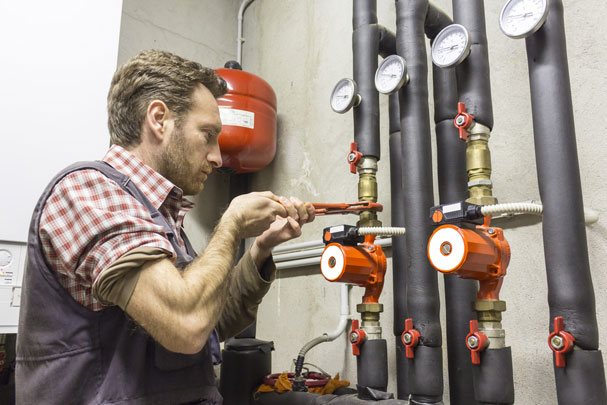

For apartments, this figure will be different. If there is a heated room above your apartment, then the coefficient is 0.7, if you live on the top floor, but with a heated attic - 0.9, with an unheated attic - 1.0. How to apply this information? The power of the boiler, which you calculated according to the above formula, must be corrected using these coefficients. Thus, you will receive reliable information.
Before us are the parameters of an apartment located in a city in central Russia. To calculate the volume of the boiler, we need to know the area of the apartment (65 square meters) and the height of the ceilings (3 meters).
The first step: determining the power by area - 65 m2 / 10 m2 = 6.5 kW.
Second step: correction for the region - 6.5 kW * 1.2 = 7.8 kW.
Third step: the gas boiler will be used to heat water (add 25%) 7.8 kW * 1.25 = 9.75 kW.
Fourth step: correction for severe cold (add 10%) - 7.95 kW * 1.1 = 10.725 kW.
The result needs to be rounded off, and you get 11 kW.
Summing up, we note that these calculations will be equally correct for any heating boilers, regardless of what type of fuel you use. Exactly the same data is relevant for an electric heater, and for a gas boiler, and for one that runs on a liquid energy carrier. The most important thing is the performance and performance metrics of the device. Heat loss does not depend on its type.
How to calculate the cost of heating a house with a boiler
To calculate the required equipment performance and costs, you need to understand what kind of climate, area, volume of living space, degree of insulation and amount of heat loss
When using turbine devices for this, it is also necessary to take into account the amount of energy that is spent on heating the air. To determine the productivity and costs of the boiler, you first need to calculate the heat losses
This is difficult to do, since you need to take into account a large number of components, in particular, materials for the construction of walls with ceilings, roofs, and the like. You should also understand the type of heating wiring, the presence of a warm floor and household appliances that generate heat.
Thermal imagers are used by professionals to accurately calculate heat losses and heating costs. Then they calculate the required indicator using complex formulas. Naturally, an ordinary user will not understand what the nuances of thermal technology are. For them, there are available techniques that allow a quick and optimal way to make calculations of the optimal performance of the equipment.
The most affordable way is to use the universal formula, where 10 square meters equals 1 kilowatt. In accordance with the pricing policy of the region, the cost of 1 cubic meter of gas costs about 4 rubles during the day and 3 rubles at night. As a result, the heating season will have to spend 6,300 rubles per 10 square meters.
You can find out the amount of optimal performance of the heater using a handy calculator. To calculate everything correctly and get the final result, you will need to enter the total heating area. Next, you need to fill in information about what type of glazing, the level of thermal insulation of walls with floors and ceilings is used. Of the additional parameters, they also take into account the height of the ceiling in the room, the introduction of information about the number of walls that interact with the street. They also take into account the fact how many floors are in the building and whether there are structures on top of it. Only after that you can find out the current prices for 1 cubic meter and calculate everything.

